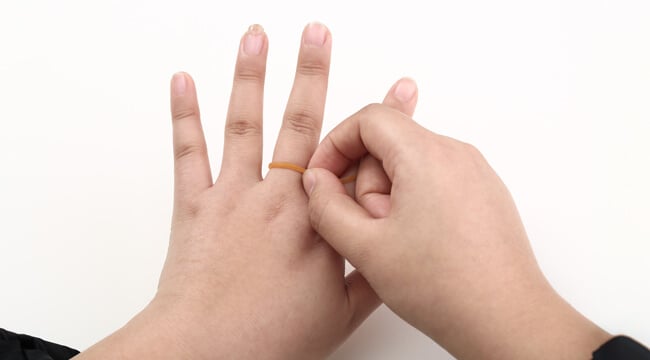When it comes to choosing an engagement ring, there is a world beyond the traditional diamond solitaire. Non-diamond engagement rings have been gaining popularity for a variety of reasons, from uniqueness and affordability to ethical and personal preferences. In this article, we will delve into the world of non-diamond engagement rings, exploring the various alternatives that can help you make the perfect choice for this significant moment in your life.
Reasons to Choose Non-Diamond Engagement Rings
Personal Expression: Non-diamond rings allow you to express your unique style and personality. You can choose a gemstone that holds personal significance or select a design that resonates with you.
Budget-Friendly: Non-diamond options are often more affordable than traditional diamond rings, making it easier for couples on a budget to find a beautiful, high-quality engagement ring.
Ethical Concerns: Some individuals are concerned about the ethical and environmental impact of diamond mining. Non-diamond rings offer a more ethical choice.
Colorful Choices: Non-diamond gemstones come in a variety of vibrant colors, allowing you to choose a ring that matches your partner’s favorite hue or birthstone.
Popular Gemstone Alternatives
Sapphire
Sapphires are renowned for their deep blue hue, making them an exquisite choice for engagement rings and other jewelry. These gemstones have adorned the fingers of royalty for centuries, signifying not only their striking beauty but also their exceptional durability. Sapphires belong to the corundum family, which includes the famous red Ruby. Their rich history and timeless appeal make them an ideal alternative to diamonds. Sapphires are also available in a spectrum of colors, from royal blue to velvety violet, ensuring that you find the perfect shade to match your personality and style.
Emerald
Emeralds, with their lush and vibrant green color, are the epitome of elegance and represent the concept of rebirth and renewal. These exquisite gemstones have long been associated with beauty and grace. The vibrant green hue symbolizes the renewal of life and the promise of a fresh beginning. Wearing an emerald is a celebration of nature’s beauty and a connection to the lush greenery of the world. Emeralds are perfect for individuals who appreciate the rich, captivating color and the timeless significance that these gems carry. Whether set in a regal tiara or a delicate pendant, emeralds convey a sense of natural beauty and rejuvenation.
Ruby
Rubies, known as the “King of Gemstones,” are the embodiment of passion and love. Their fiery red hue symbolizes desire and romance, making them highly sought-after for engagement rings and romantic jewelry. In terms of durability, rubies rank just below sapphires and diamonds, ensuring they can withstand the test of time.
A ruby engagement ring tells a love story that is as passionate and deep as the gemstone itself. It communicates devotion, strength, and an enduring love that can weather any storm. The vibrant red shade of rubies captures the essence of love, making them an ideal choice for those who wish to express their affection boldly and uniquely.
Amethyst
Amethyst, with its deep and luxurious purple hue, has a long history as a symbol of royalty and elegance. This gemstone represents sophistication and refinement, not just for its captivating color but also for its symbolism.
Amethyst’s deep purple has been linked to opulence for centuries, worn by royalty and nobility. It’s believed to bestow wisdom, clarity, and inner peace. Choosing an amethyst engagement ring is a unique way to express your individuality and appreciation for this regal gem. Whether a classic solitaire or vintage design, an amethyst ring is a statement of elegance and grace.
Opal
Opals are nature’s own artwork, known for their mesmerizing play of colors. These gems embody individuality and creativity. Opal engagement rings are perfect for those who want a distinct ring, as no two opals are the same.
Opals are renowned for their ability to display a captivating array of colors, a phenomenon known as the “play of color.” This mesmerizing display happens when light interacts with silica spheres within the gem, creating a unique dance of colors. An opal engagement ring is an expression of creativity and individuality, celebrating the uniqueness of your love story. Whether in a modern or vintage-inspired setting, it’s a tribute to the beauty of imperfection and nature’s artistry.
Achieve the Diamond Look on a Budget with Moissanite
Moissanite is a captivating alternative to traditional diamonds, renowned for its exceptional brilliance and remarkable durability. Ranking at an impressive 9.25 on the Mohs scale of mineral hardness, Moissanite is nearly as hard as a diamond, making it an excellent choice for everyday wear. Its optical properties, such as fire and sparkle, often exceed those of diamonds, offering a cost-effective yet striking choice for jewelry enthusiasts.
One of the standout features of Moissanite is its ethical production. Lab-grown Moissanite eliminates concerns related to conflict diamonds, making it an attractive option for those who prioritize sustainability and ethical sourcing. Its affordability and environmental responsibility have contributed to its burgeoning popularity among couples seeking engagement rings that are as socially responsible as they are beautiful.
Conclusion
Non-diamond engagement rings offer a world of options, allowing you to express your love and commitment in a unique and meaningful way. In addition to their beauty, non-diamond engagement rings also provide ethical, budget-friendly, and personalization advantages that make them a compelling choice.
Don’t wait any longer; choose the perfect non-diamond engagement ring that reflects your love story. Your love is one-of-a-kind, and your engagement ring should be, too.






